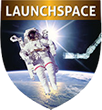Course Details
Course Summary
This concentrated course provides the basics of satellite communications, with emphasis on modern communication satellites and systems operating in low, medium, highly elliptical and geostationary orbits applicable to mobile, fixed and broadcasting satellite services. The course covers the advantages and disadvantages of orbits, coverage, access methods, modulation and channel coding, as well as radio wave propagation and transmission impairments applicable to satellite systems. Satellite payload designs and important features of ground terminals are discussed in detail. Finally, the course examines methods for improved designs of satellite systems, including ground and space segments.
Course Materials
Include extensive notes and reference materials.
Who Should Attend
Satellite and telecommunications industry professionals interested in ongoing and future developments in mobile, telecommunications and broadcasting services via satellite. Legal and regulatory professionals, decision makers and policy makers in industry, governments, members of industry associations and end-user organizations.
What You Will Learn
The relations among communications capacity and satellite parameters such as orbits, mass and power from satellites, coverage, performance, impairments and mitigation techniques. LEO, MEO, HEO and GEO. What are the differences? Mobile satellite performance. Fixed satellite service performance. Processing payloads. Satellite transponder design. Fundamentals to understand cost. Broadcasting service quality. Intersatellite links. Do your own analysis.
Course Outline
- Introduction to Satellite Communications.
Historical summary. Basic definitions, concepts, fundamentals of satellites and services. - Orbits and Geometry.
Important geometric concepts, coverage. Understanding orbits for the communications professional. Orbits:
GEO, LEO, MEO, and HEO polar, molniya. - The RF Link and Transmission Fundamentals.
How a satellite link works power, bandwidth and noise. Link equations and budgets for digital transmissions. - Multiple Access, Multiplexing, Modulation and Channel Coding.
Information sources (voice, video, data) and formats (stream and batch). Multiple access methods (FDMA, TDMA, CDMA and MF-TDMA. Source coding and multiplexing. Modulation methods (AM, PM, and hybrids mPSK, mQAM) and signal constellations. Source coding (PCM) and channel coding (FEC, concatenation, ARQ). - Transmission Characteristics and Impairments.
Radio wave propagation, spreading loss, rain losses, scintillation. Nonlinearities and intermodulation. Link margins (fixed and dynamic). Interference. - Satellite Payload Characteristics.
Major payload subsystems (antennas, receivers, filters, multiplexers, amplifiers). Transparent transponders and processing subsystems. Advanced technologies. Spacecraft bus issues (thermal, mechanical, space environment, power). Reliability and testing. - Earth Station Characteristics.
Basic receive and transmit functions. Hardware, software - for large Earth stations to telephone handsets. Synchronization for TDMA and CDMA. - Satellite System Applications and System Estimation.
Service Types - FSS, BSS, MSS and others future outlook. System trade-offs. Component, subsystem and system costing methods.
